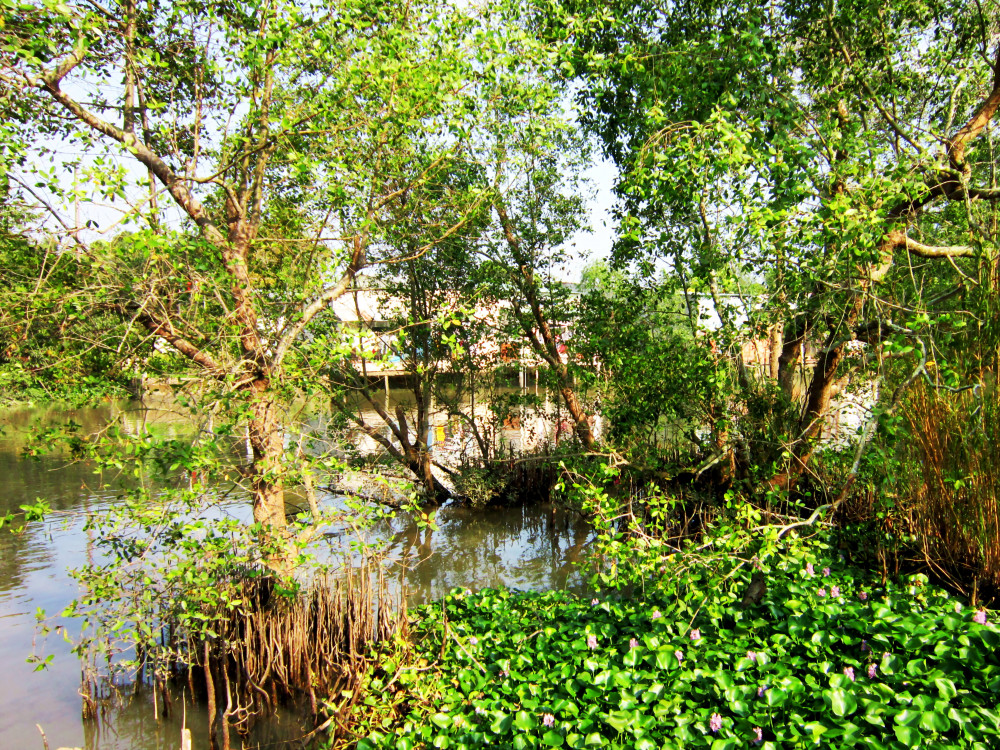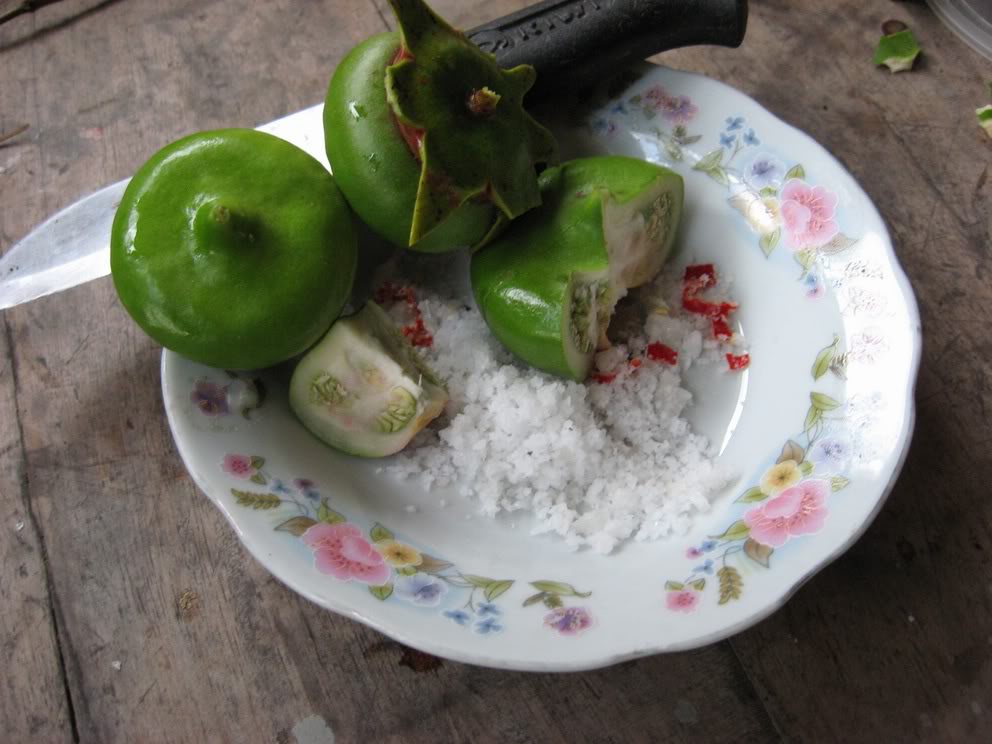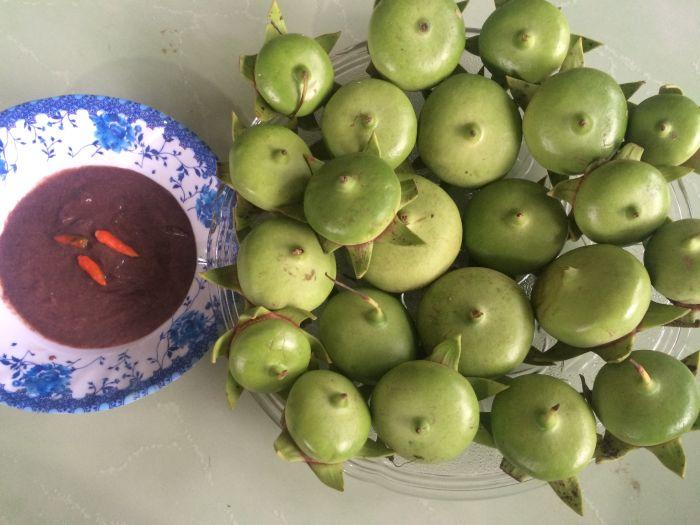What is the mangrove apple ?
Sonneratia caseolaris (scientific name Sonneratia caseolaris (L.) Engl. (S.acida L.f), belonging to the Sonneratiaceae family) is a tree that lives in muddy water environments, has a wide root system, the ability to withstand flooding and regenerate shoots strongly, has a good effect in retaining soil, blocking waves, preventing landslides along rivers and canals…. Secondary roots grow above the mud surface. Flowers are white with a hint of pink. Fruit is large, round, slightly flat, and has a sour taste.
There are many types of Sonneratia trees, the most common of which is Sonneratia caseolaris, which usually grows along rivers and has flat round fruits (also known as Sonneratia discus, Sonneratia se, water willow, purple crape myrtle, and sea copper).
Next to it is Sonneratia ovata, which has round fruits similar to guava (also known as Sonneratia egg, Sonneratia stink).
In addition, there are Sonneratia alba, Sonneratia apetala, Sonneratia Griffithii, Sonneratia hainanensis, etc.
Where does the mangrove apple tree grow?

The mangrove tree is a tropical mangrove tree, widely distributed throughout Asia, Africa and Oceania.
In Vietnam, the mangrove tree grows wild or is planted in coastal mangrove forests from the North to the South, where there is a lot of mud and alluvial land.
In the North, the mangrove tree grows in almost pure forests along the coast and estuaries such as in Hai Phong, Nghe An, and Ha Tinh.
In the South, the mangrove tree is the main component of natural coastal mangrove forests and they grow densely along rivers and canals in the Mekong Delta.
The Mekong Delta is famous for its typical tree, the “mangrove tree”. People in the West have a folk song: “If you want to eat sour mangrove fish sauce. Wait for the flood season to eat it to your heart’s content”.
The flood season in September not only brings a rich source of fish and shrimp, but is also the season of wild fruits such as water lilies, sesban flowers, and mangrove fruits.
What are the benefits of the mangrove apple ?

The fruit contains pigments, archicin, archin, 11% pectin and 2 flavonoids (2 isolated antioxidant flavonoids are luteoline and luteoline 7-O-glucoside.).
– According to Oriental Medicine:
The fruit has a sour and astringent taste whether ripe or unripe, but when ripe, the aroma is very strong. Thanks to the sour taste of cheese and the cooling properties, it has anti-inflammatory and pain-relieving effects. The leaves have the effect of treating urinary retention and stopping bleeding.
To treat sprains and inflammation: use young fruit, wash, crush and apply to the swollen area. Can use a bandage to fix and change once a day.
Cure urinary retention: pound the leaves of the mangrove tree and mix with the pulp of the fruit to make a medicine and apply it to the lower abdomen.
– According to modern pharmacological research:
Extracts from the cork tree have antioxidant, hypoglycemic and antibacterial effects. The sour juice from the cork fruit has the effect of protecting liver cells, is toxic to mosquito larvae and is anti-inflammatory. Extracts from the cork tree have the effect of inhibiting breast cancer, lung cancer and epithelial cancer. In addition, the cork tree also inhibits the enzyme
acetylcholinesterase – an enzyme that stops the activity of neurotransmitters. Therefore, this medicine has the effect of preventing the development of Alzheimer’s disease (a disease caused by neurodegeneration).

– Experience of using cork berries of other countries:
Indians use fermented fruit juice to stop bleeding and treat bleeding disorders.
In Burma, fresh fruit is used, crushed, salt is added and applied directly to bruises caused by blood stasis.
In Malaysia, fresh leaves of the tree are used to treat urinary retention. In addition, people eat ripe fruit to kill parasites living in worms, worms, smallpox, and thrombocytopenia.
The people of the Philippines use young fruit and crushed leaves of the tree to reduce swelling, treat sprains and stop bleeding.
Delicious dishes made from mangrove apple .
The fruit of the Bần tree is often processed into many rustic dishes by people in the West such as: Bần flower mixed with pork, silver shrimp, and snakehead fish. Sour Bần fruit can be eaten raw and dipped with fish sauce made from seafood.
Ripe Bần fruit is used to cook sour soup, braised fish or soaked with fish sauce, sugar, and MSG to dip boiled sweet potato leaves and spinach… The Bần tree not only has ecological, culinary, and economic value but also has medicinal value.
Note: cork has a sour taste, so avoid eating it on an empty stomach and be careful when using it for patients with gastric and duodenal ulcers. Avoid overusing medicinal herbs (especially Bần fruit) because the acid in this fruit can cause stomach pain and intestinal pain.






